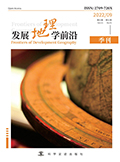

《土地利用/覆被遥感分析》以21世纪土地科学向土地变化科学 (LCS) 的转型为背景, 系统构建了“理论框架—技术方法—应用实践”的逻辑体系。全书共7章, 从土地变化科学的概念化框架入手, 依次深入探讨遥感分类方法、影像融合技术、影像格局表征、区域植被覆盖度分析、区域蒸散模型及区域土地荒漠化与驱动力分析的技术路径与实证案例, 重点阐述了逐个像元比较与分类后比较的差异、像元级融合的方法优选、半方差模型与小波分析的格局刻画能力, 以及SEBAL、TSEB等模型在蒸散估算中的应用, 并以北京山区、民勤绿洲等为案例验证技术有效性。本书为土地利用/覆被动态监测、区域生态环境评估提供了兼具理论性与实用性的遥感技术解决方案, 是土地变化科学与遥感技术交叉领域的重要参考著作。
“Remote Sensing Analysis of Land Use/Cover” is based on the transformation of land science to land change science (LCS) in the 21st century, and systematically constructs a logical system of “Theoretical Framework-Technical Methods-Application Practice”. The book consists of 7 chapters, starting with the conceptual framework of Land Change Science, then in-depth exploring in sequence the technical paths and empirical cases of remote sensing classification methods, image fusion technology, image pattern characterization, regional vegetation coverage analysis, regional evapotranspiration models, and regional land desertification and driving force analysis. It focuses on expounding the differences between per-pixel comparison and post-classification comparison, the method optimization for pixel-level fusion, the pattern characterization capabilities of semivariogram models and wavelet analysis, as well as the application of models such as SEBAL and TSEB in evapotranspiration estimation. Moreover, it uses cases like the Beijing mountainous area and the Minqin Oasis to verify the effectiveness of the technologies. This book provides both theoretical and practical remote sensing technology solutions for dynamic monitoring of land use/cover and regional ecological environment assessment, and serves as an important reference work in the interdisciplinary field of Land Change Science and remote sensing technology.